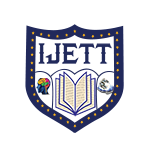Scheduling Optimization and Risk Analysis Using Monte Carlo Simulation for a Construction Project in Morocco
Scheduling Optimization and Risk Analysis Using Monte Carlo Simulation for a Construction Project in Morocco |
||
 |
 |
|
| © 2025 by IJETT Journal | ||
| Volume-73 Issue-6 |
||
| Year of Publication : 2025 | ||
| Author : Hicham Hassi, Mouna El Mkhalet, Nouzha Lamdouar | ||
| DOI : 10.14445/22315381/IJETT-V73I6P128 | ||
How to Cite?
Hicham Hassi, Mouna El Mkhalet, Nouzha Lamdouar, "Scheduling Optimization and Risk Analysis Using Monte Carlo Simulation for a Construction Project in Morocco," International Journal of Engineering Trends and Technology, vol. 73, no. 6, pp.336-349, 2025. Crossref, https://doi.org/10.14445/22315381/IJETT-V73I6P128
Abstract
This study focuses on integrating Monte Carlo simulation into construction project management to optimize scheduling and analyze risks under uncertainty. By comparing three probability distributions-Triangular, Betapert, and Uniform, the research evaluates their impact on critical and near-critical paths, project completion timelines, and decision-making reliability. The simulations reveal how varying levels of uncertainty influence task durations and criticality, providing insights into resource allocation, risk mitigation, and timeline optimization. The findings emphasize the importance of selecting an appropriate distribution type to balance predictability and flexibility in construction projects.
Keywords
Monte Carlo simulation, Scheduling optimization, Risk analysis, Critical paths, Construction project management.
References
[1] Vasiliki Lazari, Athanasios Chassiakos, and Stylianos Karatzas, “Multi-Objective Resource-Constrained Scheduling in Large and Repetitive Construction Projects,” Algorithms, vol. 17, no. 8, pp. 1-22, 2024.
[CrossRef] [Google Scholar] [Publisher Link]
[2] Vedat Toğan, and M. Azim Eirgash, “Time-Cost Trade-off Optimization of Construction Projects Using Teaching Learning Based Optimization,” KSCE Journal of Civil Engineering, vol. 23, no. 1, pp. 10-20, 2019.
[CrossRef] [Google Scholar] [Publisher Link]
[3] Tarek Salama, and Osama Moselhi, “Multi-Objective Optimization for Repetitive Scheduling Under Uncertainty,” Engineering, Construction and Architectural Management, vol. 26, no. 7, pp. 1294-1320, 2019.
[CrossRef] [Google Scholar] [Publisher Link]
[4] Heng-Wei Wang, Jia-Rui Lin, and Jian-Ping Zhang, “Work Package-Based Information Modeling for Resource-Constrained Scheduling of Construction Projects,” Automation in Construction, vol. 109, 2020.
[CrossRef] [Google Scholar] [Publisher Link]
[5] Shahin Dabirian et al., “Dynamic Modelling of Human Resource Allocation in Construction Projects,” International Journal of Construction Management, vol. 22, no. 2, pp. 182-191, 2022.
[CrossRef] [Google Scholar] [Publisher Link]
[6] Mateo Del Gallo et al., “Artificial Intelligence to Solve Production Scheduling Problems in Real Industrial Settings: Systematic Literature Review,” Electronics, vol. 12, no. 23, pp. 1-16, 2023.
[CrossRef] [Google Scholar] [Publisher Link]
[7] Mohamed Abd Elaziz, Laith Abualigah, and Ibrahim Attiya, “Advanced Optimization Technique for Scheduling IoT Tasks in Cloud-Fog Computing Environments,” Future Generation Computer Systems, vol. 124, pp. 142-154, 2021.
[CrossRef] [Google Scholar] [Publisher Link]
[8] Zied Bahroun et al., “Artificial Intelligence Applications in Project Scheduling: A Systematic Review, Bibliometric Analysis, and Prospects for Future Research,” Management Systems in Production Engineering, vol. 31, no. 2, pp. 144-161, 2023.
[CrossRef] [Google Scholar] [Publisher Link]
[9] Jian Zhou et al., “A Monte Carlo Simulation Approach for Effective Assessment of Flyrock Based on Intelligent System of Neural Network,” Engineering with Computers, vol. 36, no. 2, pp. 713-723, 2020.
[CrossRef] [Google Scholar] [Publisher Link]
[10] Michal Tomczak, and Piotr Jaskowski, “Crashing Construction Project Schedules by Relocating Resources,” IEEE Access, vol. 8, pp. 224522-224531, 2020.
[CrossRef] [Google Scholar] [Publisher Link]
[11] Yue Pan, and Limao Zhang, “Roles of Artificial Intelligence in Construction Engineering and Management: A Critical Review and Future Trends,” Automation in Construction, vol. 122, 2021.
[CrossRef] [Google Scholar] [Publisher Link]
[12] Martina Milat, Snjezana Knezic, and Jelena Sedlar, “Resilient Scheduling as a Response to Uncertainty in Construction Projects,” Applied Sciences, vol. 11, no. 14, pp. 1-19, 2021.
[CrossRef] [Google Scholar] [Publisher Link]
[13] Georgios K. Koulinas et al., “Schedule Delay Risk Analysis in Construction Projects with a Simulation-Based Expert System,” Buildings, vol. 10, no. 8, pp. 1-19, 2020.
[CrossRef] [Google Scholar] [Publisher Link]
[14] Jie Deng, and Wei Jian, “Estimating Construction Project Duration and Costs Upon Completion Using Monte Carlo Simulations and Improved Earned Value Management,” Buildings, vol. 12, no. 12, pp. 1-23, 2022.
[CrossRef] [Google Scholar] [Publisher Link]
[15] Mohammad Amin Ashtari et al., “Cost Overrun Risk Assessment and Prediction in Construction Projects: A Bayesian Network Classifier Approach,” Buildings, vol. 12, no. 10, pp. 1-23, 2022.
[CrossRef] [Google Scholar] [Publisher Link]
[16] Long Che et al., “Bayesian Monte Carlo Simulation Driven Approach for Construction Schedule Risk Inference,” Journal of Management in Engineering, vol. 37, no. 2, 2020.
[CrossRef] [Google Scholar] [Publisher Link]
[17] Onur B. Tokdemir, Huseyin Erol, and Irem Dikmen, “Delay Risk Assessment of Repetitive Construction Projects Using Line-of-Balance Scheduling and Monte Carlo Simulation,” Journal of Construction Engineering and Management, vol. 145, no. 2, 2019.
[CrossRef] [Google Scholar] [Publisher Link]
[18] Fernando Acebes et al., “Project Risk Management from the Bottom-Up: Activity Risk Index,” Central European Journal of Operations Research, vol. 29, no. 4, pp. 1375-1396, 2020.
[CrossRef] [Google Scholar] [Publisher Link]
[19] Ali Namazian et al., “Combining Monte Carlo Simulation and Bayesian Networks Methods for Assessing Completion Time of Projects under Risk,” International Journal of Environmental Research and Public Health, vol. 16, no. 24, pp. 1-19, 2019.
[CrossRef] [Google Scholar] [Publisher Link]
[20] Arkadiy Larionov, Ekaterina Nezhnikova, and Elena Smirnova, “Risk Assessment Models to Improve Environmental Safety in the Field of the Economy and Organization of Construction: A Case Study of Russia,” Sustainability, vol. 13, no. 24, pp. 1-37, 2021.
[CrossRef] [Google Scholar] [Publisher Link]
[21] Jiaxin Zhang, “Modern Monte Carlo Methods for Efficient Uncertainty Quantification and Propagation: A Survey,” WIREs Computational Statistics, vol. 13, no. 5, 2021.
[CrossRef] [Google Scholar] [Publisher Link]
[22] Janusz Sobieraj, and Dominik Metelski, “Project Risk in the Context of Construction Schedules-Combined Monte Carlo Simulation and Time at Risk (TaR) Approach: Insights from the Fort Bema Housing Estate Complex,” Applied Sciences, vol. 12, no. 3, pp. 1-35, 2022.
[CrossRef] [Google Scholar] [Publisher Link]

